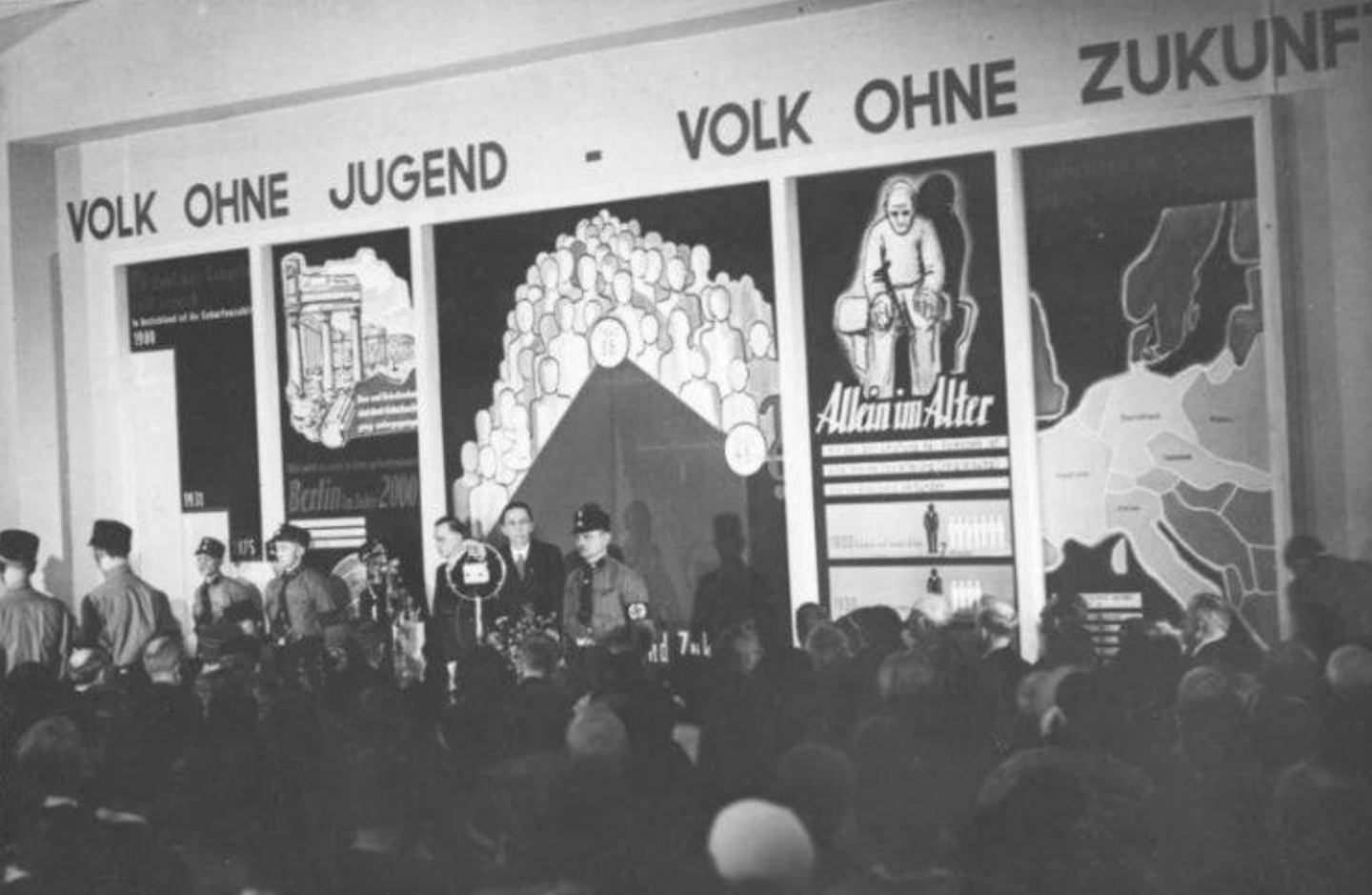Joseph Goebbels, “German Women,” speech by delivered March 18, 1933, trans. Randall Bytwerk (German Propaganda Archive at Calvin University), ➝.
Here my lack of consideration for Nazi perspectives on “non-Aryan” women should not be taken to mean that those formulations were any less complex or convoluted. Significant scholarship by by Renate Bridenthal, Myrna Goldenburg, and Zoë Waxman has examined femininity among communities persecuted by the Nazis. See: Renate Bridenthal, Atina Grossman, and Marion Kaplan, eds., When Biology became Destiny: Women in Weimar and Nazi Germany (New York: Monthly Review Press, 1984); Myrna Goldernberg. Before All is Lost: Women’s Voices from the Holocaust (Toronto: The Azrieli Foundation, 2014); and Zoë Waxman, Women in the Holocaust: A Feminist History (Oxford: Oxford University Press, 2017). Some scholarship on the role of menstruation among concentration camp detainees has also been produced, which draws heavily on oral histories and ethnographic work compiled by the United States Holocaust Memorial Museum. Emily A. Wood. “Tracing the Destruction of Women’s Bodies: Survivor Testimony of Menstruation in the Holocaust,” MA dissertation (University of New Brunswick, 2019).
Wilfried van der Will, “The Body and the Body Politic as Symptom and Metaphor in the Transition of German Culture to National Socialism.” In: The Nazification of Art: Art, Design, Music, Architecture, and Film in the Third Reich, eds. Brandon Taylor and Wilfried van der Will (Winchester: The Winchester Press, 1990), 14.
I say discursive here intentionally; it is very common in Nazi rhetoric that “industrialization” is made into some sort of vague boogeyman to which pretty much any social ill can be attributed, and most frequent as a dogwhistle for communism, which was characterized by fascists as anti-humanist. For more see Jill Stephenson, Women in Nazi Germany (Oxfordshire: Routledge, 2001), 12.
Bruno Gebhard. “The Health Museum.” Journal of Health Education 6 (1948): 133
Klaus Theweleit, Male Fantasies (Minneapolis: University of Minnesota Press, 1987), 2:xviii.
Juliane Sander. “Camelia, oder der Beginn der ‘Modernen’ Monatshygiene?” Fränkisches Freilandmuseum Bad Windsheim (January 1, 2022), ➝.
Anson Rabinbach. The Human Motor: Energy, Fatigue, and the Origins of Modernity (Berkeley: University of California Press, 1992), 286.
Ibid., 287.
This is an argument put forth in slightly different ways by several different scholars. Annie Richardson’s discussion of Nazi artworks and feminity, for example, reframes this duality. Citing the art historian Berthold Hinz, Richardson notes that one of the most critical dimensions of the representation of women in National Socialist visual culture was that of the potential for “distraction”—the ability of the image of the woman to serve as allegory for the war, promise of the aforementioned “return” to an idealized German society, and (most provocative) the attempt to directly “manipulate” the male’s sexuality by centering imagery of the female form. Annie Richardson, “The Nazification of Women in Art.” In: The Nazification of Art, 54.
